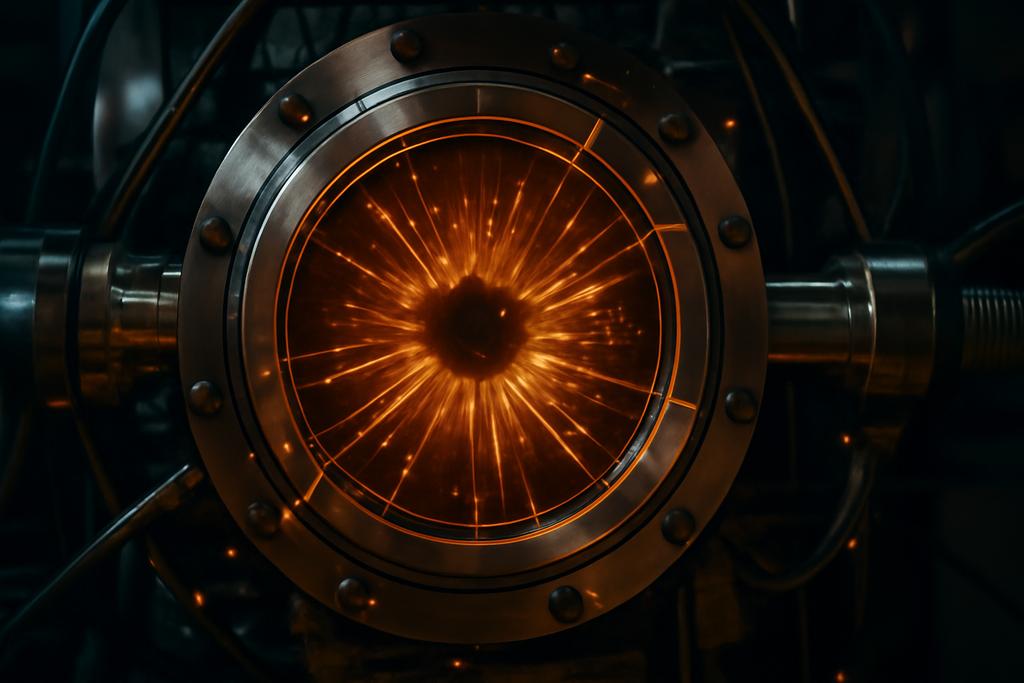The Unexpected Behavior of Mesons
Deep within the heart of atoms, a realm governed by the enigmatic forces of quantum chromodynamics (QCD), lies a world of subatomic particles with unexpected behaviors. Recent research, conducted by a team at Kyoto University and several collaborating institutions, reveals a surprising twist in the story of mesons, particles composed of quark-antiquark pairs. The study, led by Wataru Nakai, challenges existing understanding of how these particles behave within the dense nuclear matter found inside atomic nuclei.
Mesons Under Pressure: A Deep Dive into QCD
To understand the significance of this research, we need a brief foray into the complex world of QCD. This theory describes the strong force, the fundamental interaction responsible for binding protons and neutrons within atomic nuclei. A core aspect of QCD is the concept of chiral symmetry, a mathematical symmetry that, in the vacuum state (absence of matter), is spontaneously broken —leading to the generation of mass in hadrons. The assumption is that the properties of the surrounding QCD medium influence how much mass is generated in hadrons.
This leads us to mesons: short-lived particles whose properties can reveal deeper truths about the medium in which they’re created. Specifically, changes in meson mass within a dense nuclear environment are thought to be directly linked to the restoration of chiral symmetry.
Previous Studies: A Puzzle of Contradictory Results
Previously, experiments aimed at observing these meson mass shifts relied heavily on high-energy collisions of heavy ions. The reasoning was that such collisions would generate a quark-gluon plasma (QGP), an extremely hot and dense state of matter, where the effects on meson masses would be significant. While these studies offered some insights, the results were often ambiguous and yielded conflicting data. For instance, experiments at the Super Proton Synchrotron (SPS) and Relativistic Heavy Ion Collider (RHIC) produced different interpretations of the meson mass spectra, which did not fully reveal the in-medium properties of mesons.
Other studies utilized different experimental setups and methods — like employing photon and hadron beams to probe nuclei — but even these offered inconsistent results. Some reported meson mass shifts, while others only observed width broadening. The sheer variety of outcomes highlighted significant gaps in our knowledge.
The KEK-PS E325 Experiment: A New Perspective
Enter the KEK-PS E325 experiment. This study, conducted at the KEK 12-GeV Proton Synchrotron in Japan, took a different approach. By using a 12 GeV proton beam to collide with carbon and copper targets, researchers generated mesons within a dense nuclear environment and probed its properties using a large magnetic spectrometer. This novel approach, particularly in the energy regime, afforded researchers the chance to observe meson behavior with high precision.
The researchers focused specifically on the ρ and ω mesons and examined the electron-positron decay channels of these mesons. This was done for a couple of reasons: the relatively short lifetimes of these mesons would provide a more localized observation within the nuclear environment; the electron-positron pair is a relatively clean signal. After careful analysis, the researchers were able to gain a high-precision understanding of their decay rates. And what they found was nothing short of unexpected.
A Low-Mass Surprise: Excesses and In-Medium Effects
The E325 experiment revealed a consistent excess of events on the low-mass side of the ω meson peak. This wasn’t just a minor fluctuation; it was a significant result observed across various experimental conditions. This excess could not be explained by known background processes. Instead, it hinted at something more profound: in-medium modifications of meson properties.
In simpler terms, it seems the ρ and ω mesons were changing their masses when inside the nucleus. This wasn’t a small effect; the mass reduction could be as much as 9.2% at normal nuclear density.
Updated Analysis: Refining the Picture
The authors of this new study went further than their predecessors. They performed an updated analysis of the E325 data, incorporating improvements in both experimental data analysis and theoretical modelling. For example, the researchers optimized their kinematic cuts to enhance their detector’s acceptance, reducing systematic biases; they also updated the models of background processes and applied internal radiative corrections — refinements that had not been available in previous experiments.
These updates showed that the mass shift of mesons was larger than previous evaluations. It’s important to note that the observed mass modifications were velocity dependent, meaning the changes to meson mass were affected by the meson’s speed. The lower the meson’s speed, the larger the mass modification.
Implications and Future Directions
The findings of the KEK-PS E325 study offer a significant advancement in our understanding of mesons and QCD. The observed in-medium mass modifications of ρ and ω mesons not only confirm theoretical predictions but also highlight the importance of considering velocity effects in such calculations. This research suggests a much more nuanced and dynamic picture of how hadrons behave within nuclear matter than previously envisioned. This discovery has profound implications for theoretical models of QCD, especially those attempting to describe the behavior of matter under extreme conditions.
The study’s methodology, with its detailed attention to experimental effects and refinements in data analysis and modelling, also sets a new standard for future research in this area. The experiment’s novel approach to studying mesons in the 12 GeV energy regime offers a high-precision measurement of meson properties, potentially resolving longstanding ambiguities. These updated results offer a higher degree of certainty on mass modification and also suggest that a better theoretical model is needed to explain all experimental results of meson production.
Future research might focus on exploring these meson mass shifts in even greater detail, across a wider range of energies and nuclear systems. This could involve new experiments designed to test these unexpected findings and to investigate other possible mechanisms at play. This detailed experimental approach provides a more comprehensive and accurate picture of the complex processes governing the behavior of matter at the subatomic level, thus advancing the development of our most advanced physical theories.










